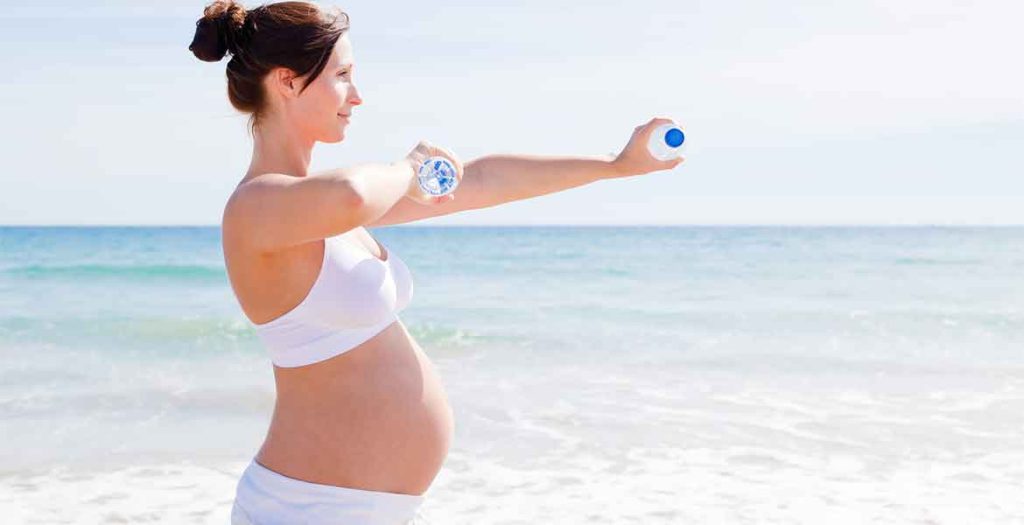If you’re used to exercising regularly, can you keep it up while you’re pregnant? And if you’re more used to the couch and the gym, should you think about getting out and about more? Here’s B’s guide to pregnancy fitness
The first few months of pregnancy knock most of us for six. But when the sickness has (hopefully!) receded and you’ve started to glow, it’s worth digging out a pair of comfy leggings, sizing up your sports bra or splashing out on a maternity swimsuit. And that does include women who’ve never done anything much to date. This isn’t the time for taking up a strenuous new regime but it’s certainly a time for doing what you can.
Yes, it’s good for you…
Physically and mentally, exercise is a winner. Stay within safe limits at a time when your centre of gravity’s rapidly shifting and your ligaments are making your joints extra-stretchy but if your health professionals are OK with your chosen form of activity, it will definitely help you stay active and maybe offer you a better birth too.
40 weeks of pregnancy puts a lot of strain on your pelvic floor and stomach muscles, so exercise is one of your best bets for keeping them in shape – with the spinoff that you’re more likely to fit back into your normal clothes reasonably soon after birth.
Exercise is also a really good way to keep your mood from sinking at a time when you’re prone to mood swings at best and more serious mental health conditions at worst. Getting moving – and especially getting moving in the open air, with a bit of green under your feet and blue (on a good day) over your head – isn’t a cure-all but it can definitely make a difference. What’s more, putting your body through its paces will help you feel a bit more in control of it, as it goes through its transformation of building a whole new person; those changes are amazing but they’re also disconcerting, particularly to women who’re used to being the boss of their own (and others’) lives.
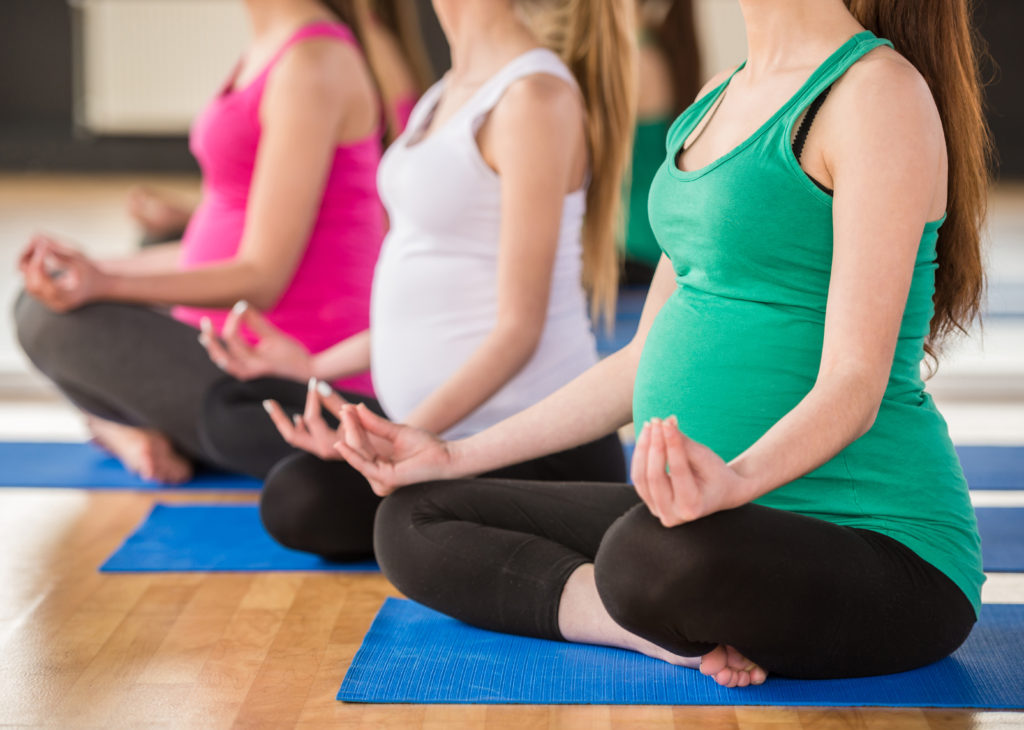
If you join a class with other pregnant women there’s also a social spin-off, which may not seem so useful now but will come into its own when you all have small babies.
Though a fit pregnancy can’t guarantee you an easy birth, it does help. It can also put you in a good position to handle parenthood; and reassuringly, if you’ve had to dial down your regime for pregnancy, the experts are confident that you’ll get back to your previous fitness level.
…But be careful
Ask your class leader what you can do, and whether there’s a regime specifically targeted at pregnant women.
What should I wear? See our feature on the most stylish Athleisure wear for pregnancy
If you’ve been diagnosed with any condition like pre-eclampsia or you’ve had bleeding, talk to your doctor or midwife before taking up or going on with exercise. The same goes for pain in your pubic area.
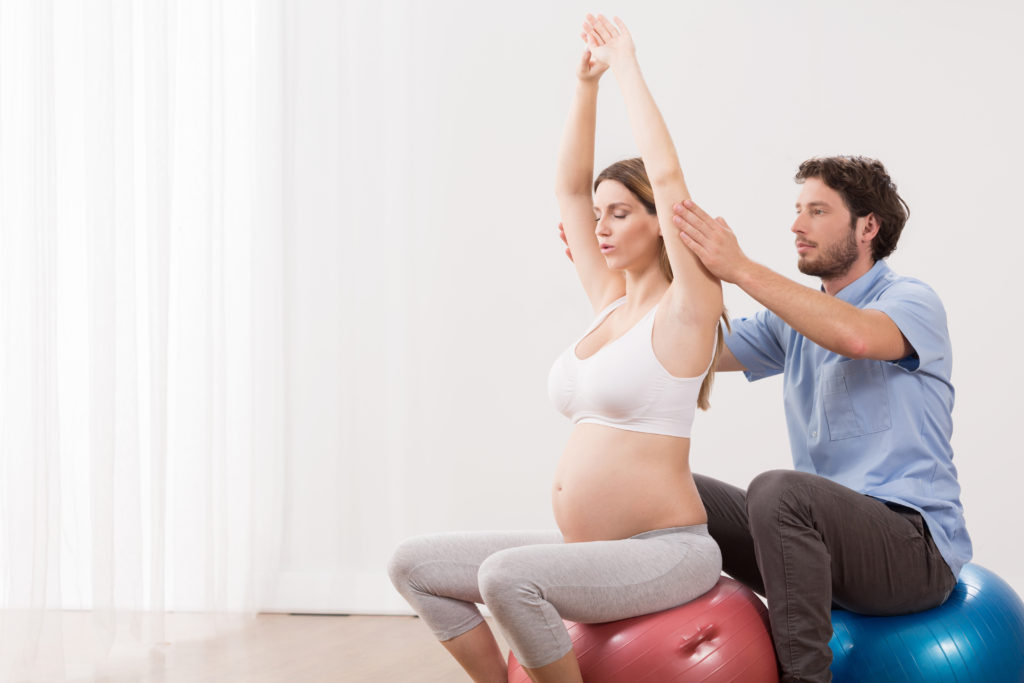
Your heart is already having to cope with pumping an increasing amount of blood round your expanding body, so be aware that you don’t want to push it too far. If you find yourself getting too hot, or sweating a great deal, that’s a sign that you’re overdoing things. Even if you don’t usually bother with a bottle of water, keep one with you now at all times, as you do need to keep the baby hydrated (so that means swigging regularly yourself). As well as that, you shouldn’t put too much strain on those stretchy ligaments, because you might pull them (the ‘relaxin’ hormone in your system is getting your pelvis ready to open for childbirth, but unfortunately this can also lead to a twisted knee if you’re not careful).
What’s off limits
Bad news for high intensity training fans: it’s usually not considered a good idea to put yourself through that kind of high-impact workout because you must make sure that you don’t stress your heart or joints. From mid-pregnancy on, you also shouldn’t lie on your back or you could pass out – that’s one reason why even seasoned yogis or pilates practitioners should opt for a specialist antenatal class.
On top of that, you need to protect your baby bump. Once you’re past three months (which is, in reality, when most of us can face getting back into exercise in any case) you should avoid contact sports where you might be hit – that includes squash and judo as well as classes like boxercise.
Be very careful, too, about anything where a fall might injure you – neither riding nor skating are good ideas; skiing is also off-limits (you can go, but stick strictly to a – non- alcoholic – aprés-ski lifestyle). And obviously, you don’t want to drop anything on your bump! That rules out training with heavy weights, including cross-fit or circuit classes using bar bells.
Climbing is also not a great choice at this time (even if you can fit the kit round you or get close to the wall) and scuba diving is dangerous because the baby isn’t protected against a potential embolism, so this should be avoided completely.
What’s recommended
There are plenty of things, though, that you can still do. If you’re new to the exercise scene, an antenatal class is often the best way to start. Most of these concentrate on yoga, pilates and/or exercise in water. Classes like this are a terrific way to tone up, become more flexible and also meet other women whose babies are due at around the same time as yours. If you really can’t face one or fit it into your day, explore the world of pregnancy exercise DVDs which can be followed in the privacy and comfort of your own home.
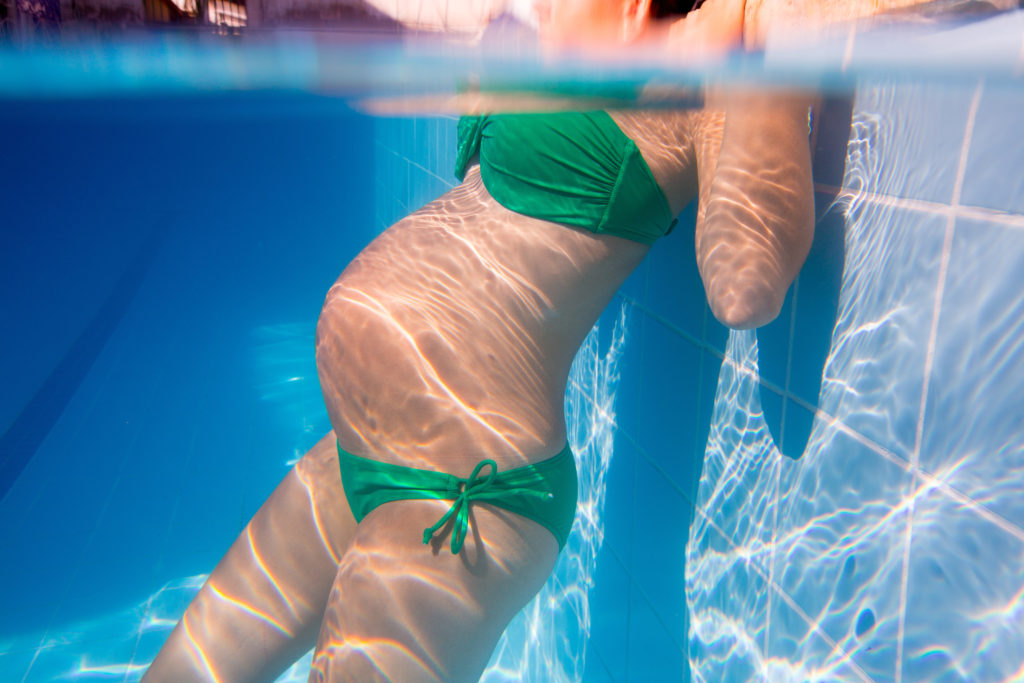
If you’re already a regular yoga or pilates practitioner, do keep going – but let
any trainers know that you are pregnant and consider switching to a class that is tailored to pregnant women because these will keep the weight off your back.
On top of this, you need to work your heart and lungs: so don’t forget to move as well. Swimming’s a very good choice here, because it takes your increasing weight off your feet and doesn’t impact on your joints (though if you swim breast stroke it’s a good idea to avoid stretching your pelvis; try straight leg kicks instead of the usual frog leg movements – if you use training fins this is a surprisingly energetic workout in its own right.
But you don’t need to limit yourself to these! Plenty of women who’re regular runners or dancers keep going well into pregnancy. Cycling (if you’re worried about falling, use a stationery bike) and spinning are also often recommended; once again, make sure you don’t overheat – another benefit of swimming, of course, as the water usually keeps you nice and cool. Classes in the general aerobics category (that includes Zumba) should also be OK, if you stick to low- impact routines – and always, always tell the instructor that you’re pregnant. And if you’re one of the many women who’ve enjoyed rediscovering her inner Fossil sister with ballet and barre work in recent years, you can keep going as long as again, you’re low-impact and stay close to the barre (and again, you may find a specialist class).
Just remember the watchwords: don’t overheat, don’t push yourself and keep hydrated; and if anything untoward starts to worry you, just stop.
Everyday exercise
Finally, don’t forget that you don’t have to make a production of exercise – however crowded your day, do try and make sure that you’re moving a bit in your day. One of the best things you can do for your body (and one that won’t stress your joints) is quite simply walking. We’ve all heard them time and time again but suggestions like ‘get off the bus one stop earlier’, or ‘get away for 30 minutes in your lunch hour’ do genuinely work. If you can’t manage it in the week, go at the weekend. Just one tip, though, if you’re in the park: stay away from the playground. You’re likely to get to know it very, very well over the next few years… believe us.
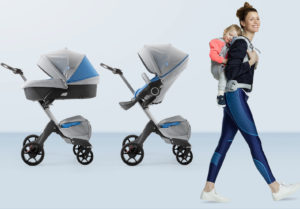
When you’re choosing a pushchair, there are many things to consider. It should complement your lifestyle and your fashion sense, should be easy to manoeuvre and use and it should also be comfortable and supportive for your child. The new Stokke Xplory Athleisure meets all these criteria and more, combining form and function in a beautiful package. Read our review and also of the Stokke MyCarrier Athleisure carrier.
More to read:
What to wear? See our feature on Athleisure for pregnancy
What exercise can I do in pregnancy?
Read about the new Stokke Athleisure range
Seven ways to get fit with your pushchair
Sponsored post

